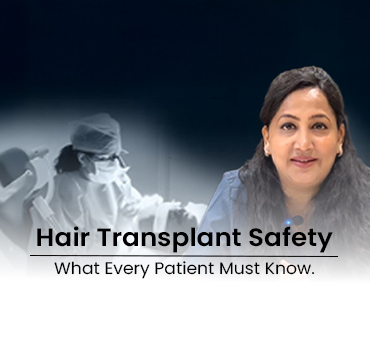Hair Transplant Safety: What Every Patient Must Know

The effect of hair loss runs deeper than what’s visible on the surface. From the way you style yourself to how you feel in social settings, it often has a deeper emotional impact than people realise. Technological advancements have made hair transplants a long-lasting solution. But like any other medical procedure, safety should be your priority. When you’re battling baldness or thinning from hormonal changes, knowing everything about hair transplant safety can make a world of difference in both outcome and experience.
Why Does Hair Transplant Safety Matter?

Hair transplants may seem routine these days, but they’re still surgical procedures. Just like any other medical treatment, they carry potential risks if not performed properly. That’s why safety can’t be treated as an afterthought.
Unfortunately, many patients rush into it without asking the right questions. Some are drawn in by low-cost clinics or overseas packages that promise quick results. But the money you save upfront could cost you later in complications, such as infections, scarring, or unnatural-looking hair growth.
The International Society of Hair Restoration Surgery (ISHRS) has warned against unlicensed, poorly regulated providers operating in “black market” clinics. These clinics often skip essential safety protocols and may rely on underqualified staff to perform surgeries. The consequences of a botched transplant can take years to resolve and may require several corrective procedures.
The reality is: where and how you get your hair transplant matters just as much as who performs it.
Take a closer look at the key factors that influence the outcome, safety, and longevity of your hair transplant.
1. Surgeon’s Experience
The most important decision you’ll make in this journey is choosing the right surgeon. Make sure that the surgeon has proven expertise in hair restoration. Do not hesitate to ask how many procedures they’ve performed. Request before-and-after photos, testimonials, or references.
At DHITM, this trust is backed by strict adherence to internationally recognised standards. Every surgeon follows protocols set by the UK’s Care Quality Commission and ISO, setting a benchmark for uncompromised hair transplant safety.
2. Consultation
Any ethical hair transplant journey begins with a thorough consultation.
Here’s what a good consultation should be like:
- A medical history check
- Scalp examination
- Discussing expectations
- Hair loss pattern and donor area
- Review of potential risks and side effects
Avoid clinics that make unrealistic claims. Hair transplant results depend on the availability of donor hair and the skill, technique, and experience of the medical team performing the procedure.
At DHITM, hair transplant procedures are defined by surgeon-led care, with specialists involved at every step, right from the initial consultation.
3. Sterility and Surgical Environment
The best hair transplant clinics maintain hygiene like an operating theatre. Ask if the facility is accredited, uses sterilised or disposable tools, and has emergency protocols. DHITM ensures a sterile, infection-controlled surgical environment certified by UK and ISO standards, reinforcing its commitment to safety, precision, and patient care.
4. Weighing the Risks
Not all hair transplant clinics follow proper medical protocols, and that’s where problems begin. Poor follicle growth, visible scarring, infections, or an unnatural hairline are often the result of unhygienic practices. Choosing the right clinic is important to avoid complications for the best hair transplant results.
5. Postoperative Care
After surgery, your part in safety begins. Follow the post-op instructions provided, including:
- Keeping the scalp clean and dry
- Avoiding direct exposure to sunlight
- Sleeping in an elevated position to reduce pain & swelling
- Skipping intense exercise or saunas for at least a week
- Using prescribed antibiotics or anti-inflammatory medications
Ignoring these can delay healing or compromise the results. If you experience constant pain, swelling, or signs of infection, contact your surgeon immediately.
DHITM is a trusted hair restoration clinic where patients receive comprehensive postoperative care and personalised follow-up plans to support sustained recovery. Recognised as a top hair transplant clinic in India, DHITM prioritises both safety and long-term success.
6. Long-Term Considerations
Hair transplants offer permanent, natural-looking results, especially when done right. This is why having a long-term hair restoration strategy is essential. Discuss ongoing hair loss management with your surgeon. DHI’s advanced hair treatment for hair loss offers natural-looking, long-lasting results, and their customized postoperative care helps preserve and enhance those outcomes over time.
Why Should DHI™ Be Your First Choice for Hair Transplant?
When it comes to safety, expertise, and patient satisfaction, DHI™ clinics set a high standard in hair transplant care. The DHI™ hair restoration clinics stand out for their medical protocols and surgeon-led procedures, offering full involvement of certified surgeons from your initial consultation to your post-op care.
With a patient-first approach, state-of-the-art infrastructure, and a wide range of customized treatments tailored to your scalp’s unique needs, DHI™ is recognized as the best hair transplant clinic in India.
Take the first safe step toward fuller, more natural-looking hair, with no discomfort and maximum care. Book your consultation with DHI™ today!
